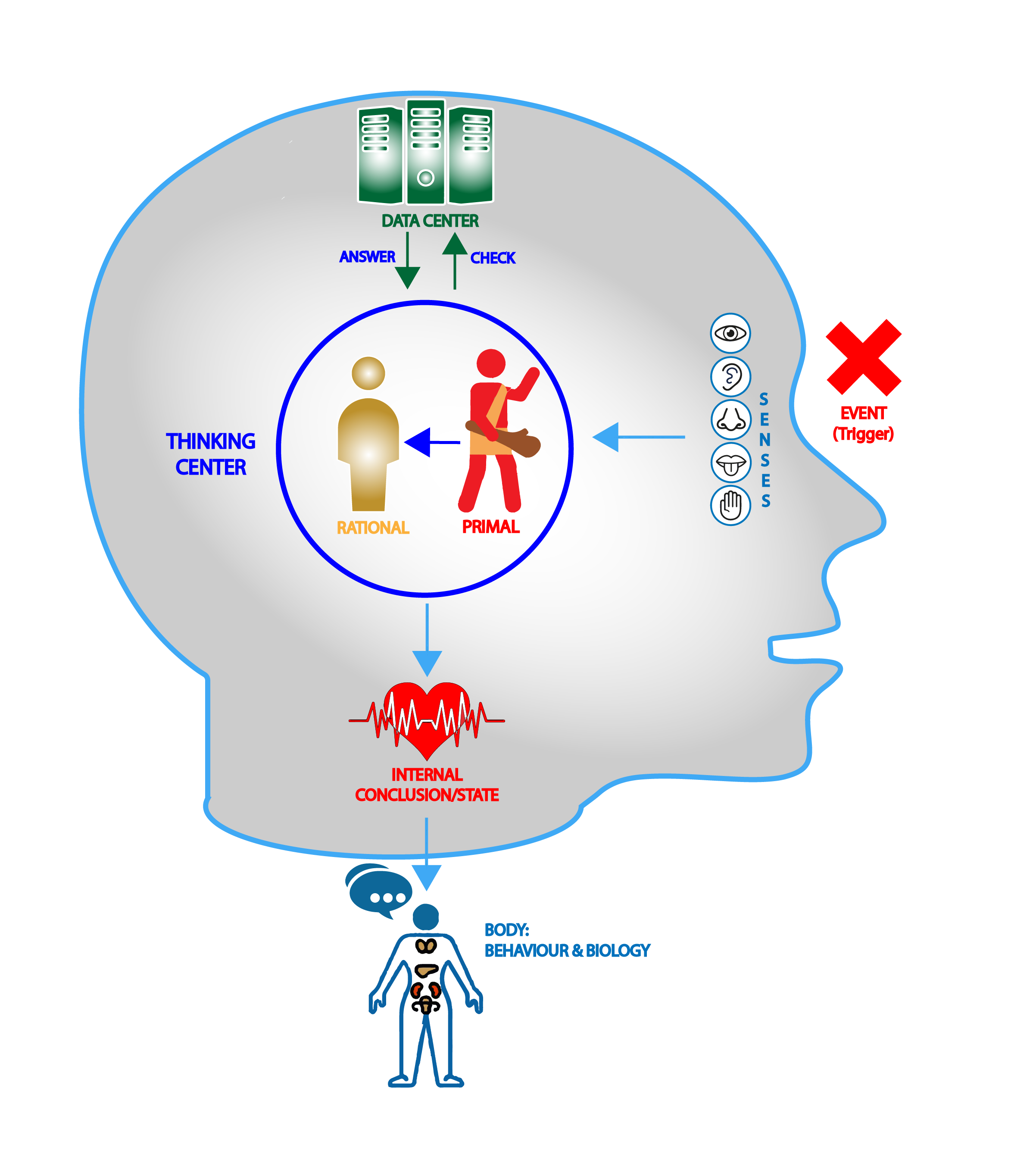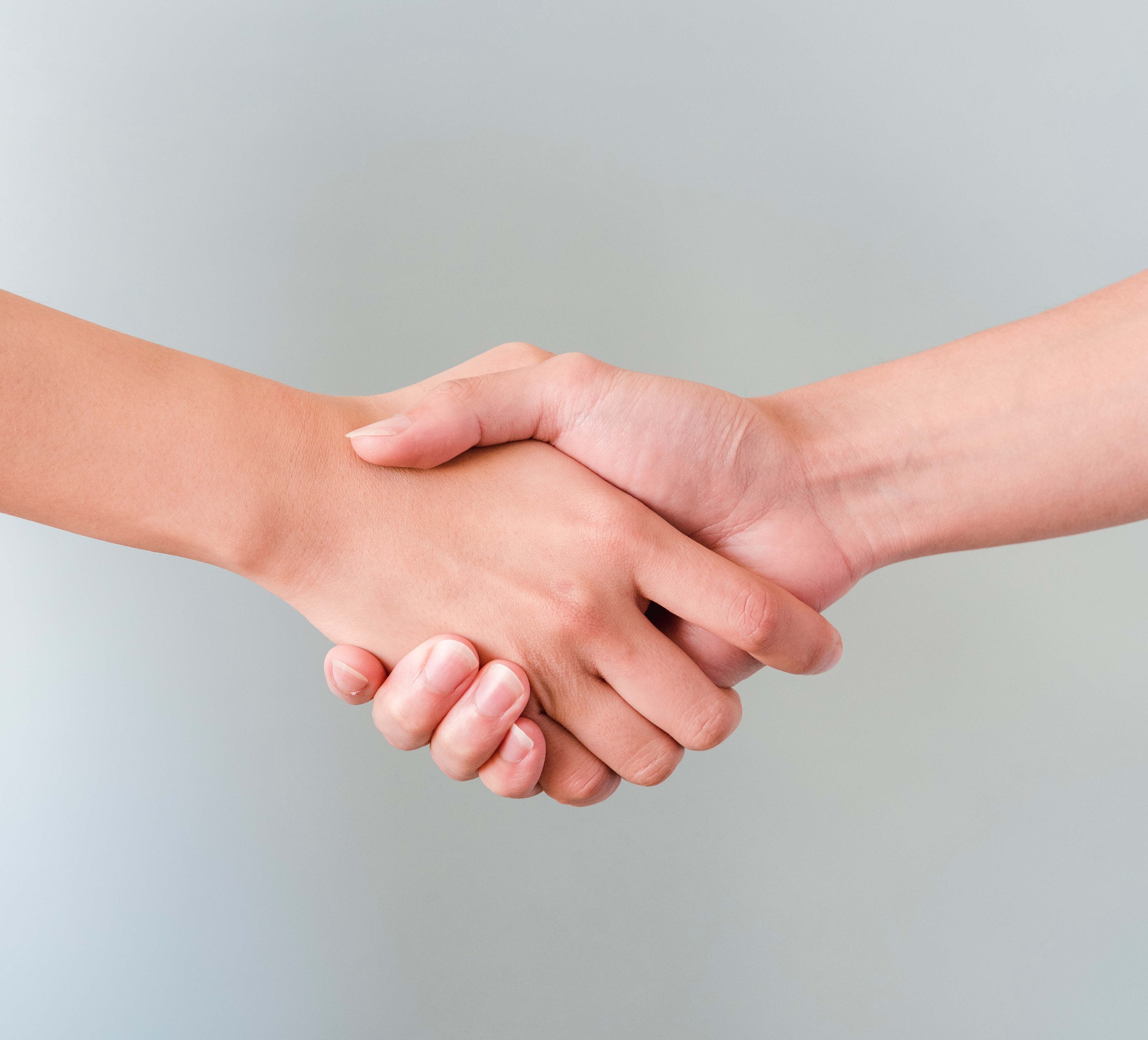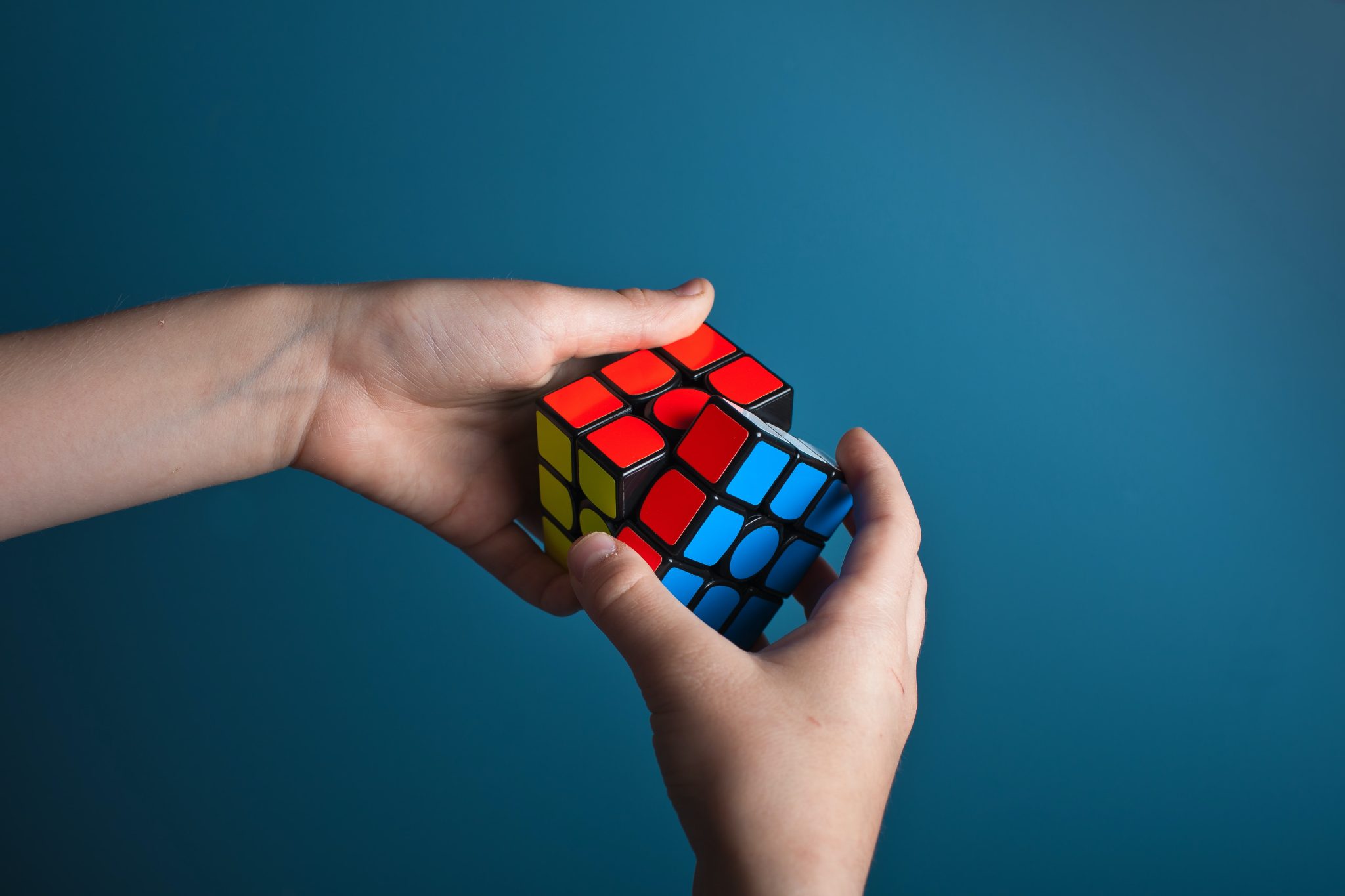The “E-motion/Motion” pattern – What will you get from this article?
Is this FOR you?
By the end of this article, you will have:
☑️ Picked up the necessary knowledge to observe body language: Motion detection
☑️ Uncovered one of your most unconscious body language patterns: the “E-motion/Motion” looping effect.
☑️ Noticed how this unconscious pattern exposes your E-motions and even what is on your mind.
☑️ Realised how this E-motion/Motion” looping pattern dictates your motions: how you move, your posture, gestures & facial expressions.
☑️ Uncovered how this innate pattern forces you to behave one way or the other.
☑️ Appreciated how this unconscious pattern of “E-motion/Motion” can improve or worsen your well-being & state of mind.
Is this like YOU?
� Would it be useful for you to:
– Raise your self-awareness & social awareness on body language basics?
– Increase your understanding of the importance of body language & its impact on how you feel?
– Learn about your innate drive and instinct, coming from both your body and mind, to act in very specific ways?
What will you learn?
You will learn about the “E-motion/Motion” feedback loop, specifically:
– What it does to you
– How it impacts you mentally, physically & socially.
Reminder – Why learn this?
With this knowledge, you would be in an improved position to:
✔ Gear yourself toward the impact & results that you want
✔ Increase your self-awareness and social awareness
✔ Manage any unwanted thoughts or behaviour stemming from your PRIMAL mind (Emotional brain)
E-motion brings motion !
Motion detection: What to observe in body language
Motions: Face, body, movements & voice
When interacting with others, do you know what to look out for when observing their body language?
You look at their non-verbal signals, this means paying attention to everything other than what they say.
Observing non-verbal signals are specifically 4 elements:
– VOICE: Sounds & silences
– FACE: Expression & micro-expressions
– BODY: Posture
– MOVEMENTS: Gestures & speed
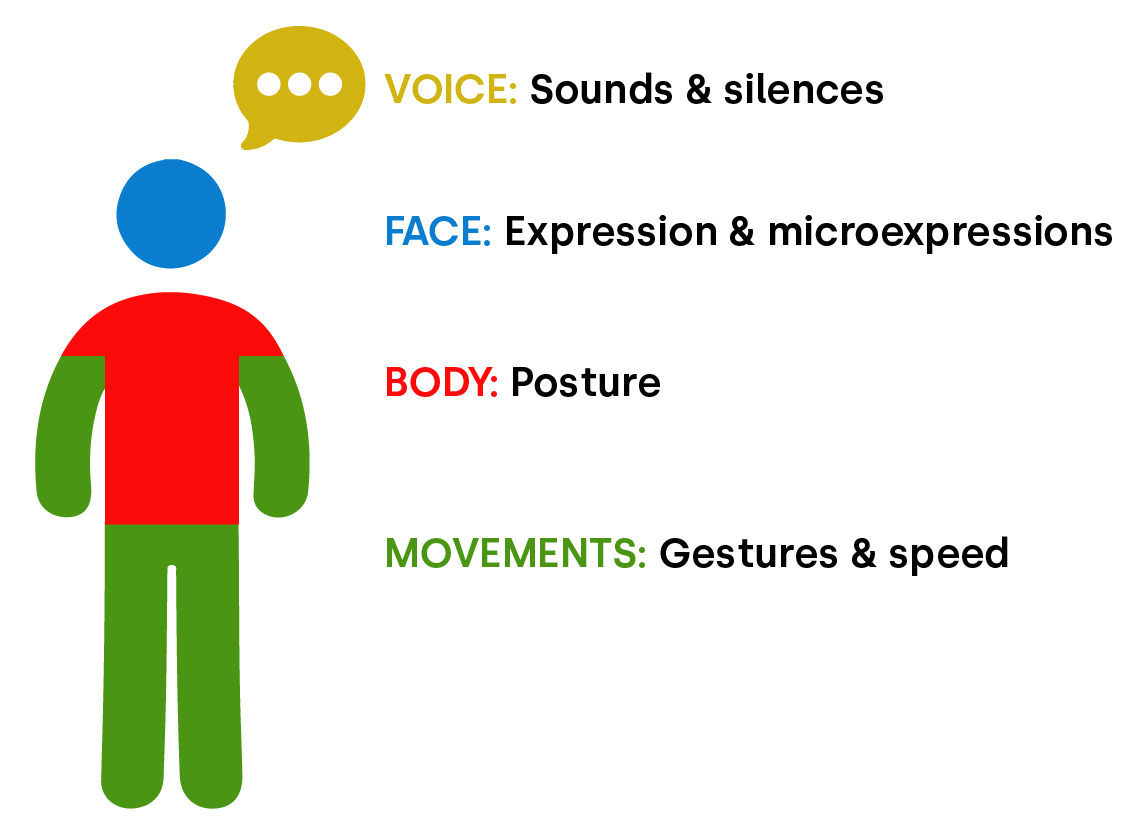
Observing non-verbal signals is paying attention to everything except their words.
Noticing the changes in the voice, face, body & movements.
In this article, we will focus on the FACE, BODY & MOVEMENTS elements of non-verbal communication.
“E-motion gives Motion” effect
E-motions showed by your motions (how you move)
As you may have already noticed, when FEELING a mood/emotion or THINKING certain thoughts, your body expresses it.
Examples:

Happiness :
Face: Eyes bright & open smile …
Body: chest up
Movements: Arms open, taking space …
Hurt :
Face: Eyes closed, head to the side, closed mouth …
Body: Chest down
Movements: Hands crossed, close to the body, slow and not taking space …


Anger:
Face: Eyes clenched, eyebrows frowning, mouth, closed or open with narrowing of the lip corners …
Body: Chest out
Movements: Hands are clinched, moving fast and taking space …
Suspicion :
Face: Eyes clenched, head to the side, pursed mouth …
Body: Chest turned to the side
Movements: Hands are crossed, in front of or near the body, …


Shock/Surprise:
Face: Eyes wide open in disbelief, eyebrows and forehead raised, mouth open and jaw dropped …
Body: Chest up …
Movements: Hands to the face or side,
These examples demonstrate the obvious & natural pattern of:
→ What you think & feel is what you do with your face, body, and gestures (non-verbal signals), this process often occurs unconsciously.
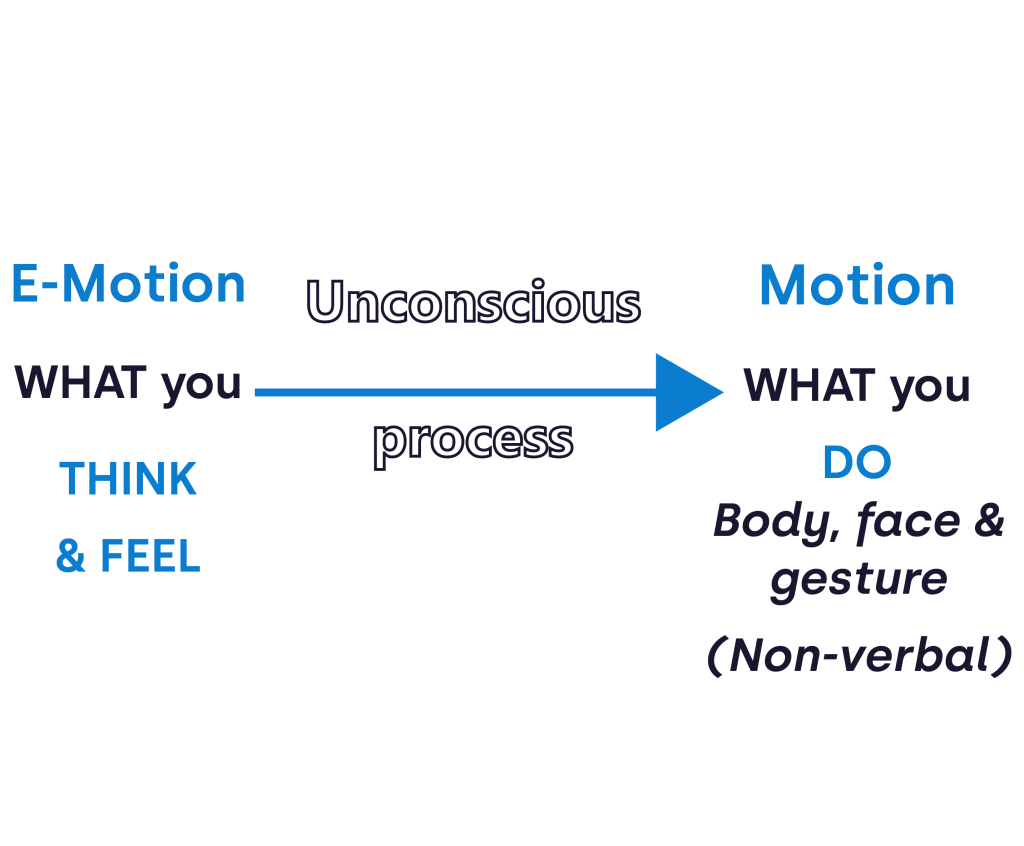
Your E-motions are expressed unconsciously by your motions: face, body & gestures (Non-verbal).
“Motion brings E-Motion” effect
Mind and body harmony
After learning & understanding the “E-Motion TO Motion”, you can also realise how your body and mind have to be in harmony, this means “Motion WITH E-Motion”.
This means that your body & mind have to be congruent & in sync. You can verify this right now with the exercises below.
❓ How good is your body & mind harmony❓
In these exercises, you can adopt the following poses & postures (non-verbals) and say the suggested sentences (verbal).
As each of these hold different vocal & physical meanings, you can see if you can feel that need for “staying in sync”.
You will most likely realise this innate need for congruency, which will make your mind & body bug. This would be like a computer bugging when running two conflicting programs at the same time: switching on & switching off.
Exercise # 1: Get annoyed & hold a victory pose

1 – Remember something that annoyed you
2 – Put a smile on your face & hold a victory pose (High-power pose)
3 – Now, keep smiling and keep remembering that annoying time
4 – Keep remembering your annoying story & maintain that smile all along
� Are you able to feel annoyed, or can you not?
→ Most likely you can’t and this is thanks to your body and mind congruence.
Exercise # 2: Put your head down & claim that you feel energised
1 – Take this depressed posture (Low-power pose)
2 – Kneel or crouch, put your head down, hands in between your head
3 – Mumble & say quietly: “I feel happy & full of energy”
� How do you feel?
→ Most likely you would feel the opposite of feeling happy & full of energy!

Exercise # 3: Flex your biceps hard & claim that you feel depressed

1 – Take this pose (High power pose)
2 – Pump your chest out & flex hard your biceps, do it hard and strong
3 – Say very LOUDLY “I feel depressed & and down”
� How do you feel?
→ Most likely, you would feel the opposite of feeling depressed & down!
Your inability to feel the opposite of what your body is doing is due to the necessary congruency of your “E-motion” with your “motion”.

Your “E-motion” has to be in harmony with your “motion”.
Your posture can make you feel worse
💡 Science fact
In a study group by Riskind, J.H and Gotay, C.C (1982) “Physical posture: Could it have regulating or feedback effects on Motivation and emotion?” (Motivation & emotion 6 273-98), two groups of participants were asked to do the same task yet with different postures:
– The first group was asked to do it with a hunched & tensing posture.

– The second group was asked to do the SAME task, do it with a straight spine.

→ Result of the study :
The participants of the first group with the hunched posture reported:
– Higher levels of stress
– Lots of stomach knots
⚠️ Note:
A hunched & tensed posture is a low-power behavioural expression, which is linked to fatigue, insecurity, and lethargy.
A straight spine with your chest up is a high-power stance, which is linked to energy, confidence, and strength.
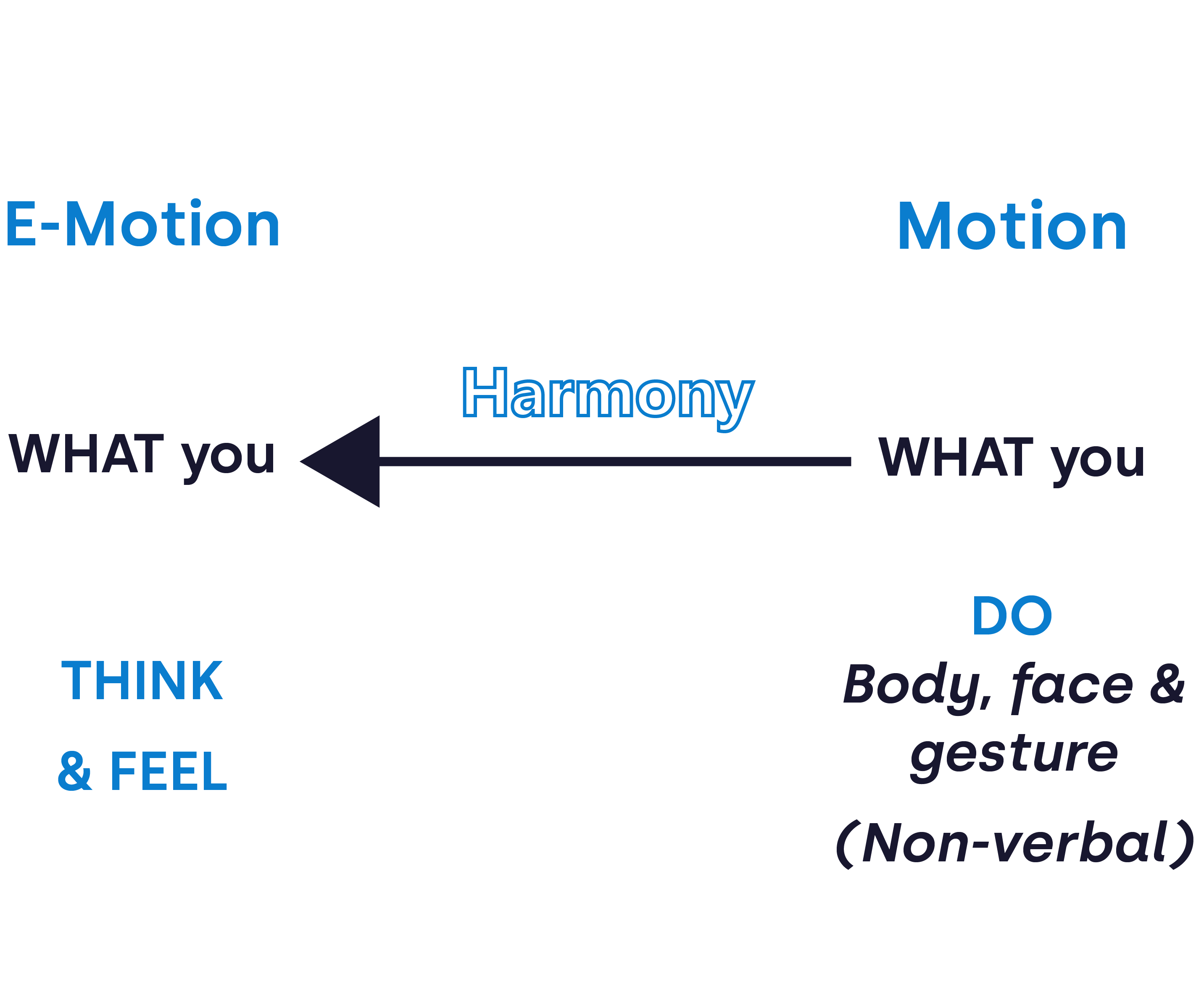
Your posture can improve or worsen your moods or feelings :
→ Your “Motion” can impact your “E-motion”
The “E-motion/Motion” looping effect

Following how Motion impacts E-motion, you can start noticing the looping effect of how “E-motion/Motion:
Any unwanted moods & disempowering feelings can be reduced or replaced with a high-power posture, this is via the “E-motion/Motion” looping effect.
In the next article, you will learn how to master the “E-motion/Motion” looping effect, with it, you can:
✔ Get rid of unwanted emotions & moods
✔ Decide if you want to feel confident, happy, intimidating…
✔ Choose how you can be perceived by others & leverage it to turn it into a recurrent social dynamic.
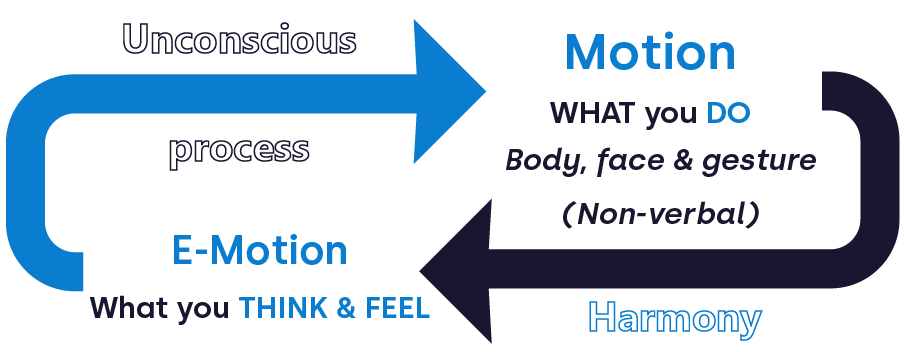
With the “E-motion/Motion” looping effect, unwanted moods can be diminished with a high-power posture
Enjoyed this article & curious to take it to the next level?
Realise that this article is an extract from the fundamentals of the Social Intelligence & Emotional Intelligence workshops.
These workshops are transformative blends of relaxation, mind management & communication tools & techniques.
Designed to release your best, these workshops will deliver you the methods to :
✔ Become more relaxed & reduce your stress
✔ Be in charge of your emotions & increase your well-being
✔ Develop your leadership & influence
→ For any questions about these workshops, you can schedule your FREE discovery call to find out more.
Up until next time, go learn & go RELEASE YOUR BEST !!!






